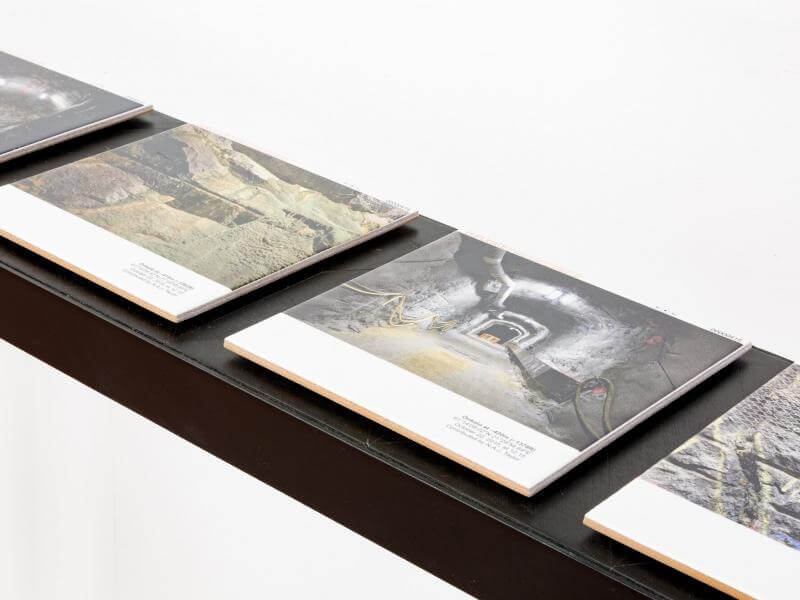N.A.J. Taylor, The University of Melbourne
Sydney 2018: Situated Knowledges
With the detonation of the first nuclear weapon on July 16, 1945, we irreversibly entered the nuclear age. When people think about our shared nuclear future today, they tend to employ one of two, competing, narratives. In one vision we humans—and perhaps everything—is violated and dies. In the other, life thrives because Earth is either in a state of nuclear peace or is denuclearized. Taylor’s Nuclear Deferral intervenes in this discourse by bringing into view a third and fourth possible future, in which nuclear harm is inflicted on Earth and its inhabitants from either above or below. On at least one of these nuclear endings we can be certain.
The first series of images catalogue select human artefacts and other details—such as plastic pipes, painted walls, drilled test holes, and mosses—that will be inadvertently entombed along with Finland’s radioactive material. The medium selected to do so is stoneware ceramic fired at 1200C to withstand a five-kilometre ice shield, as well as other radiation, magnetic, and chemical interferences. Original copies of the tablets on display have been deposited into chambers measuring 5x5x3 metres which are nestled deep inside salt deposits dating more than forty million years old. The facility, known as the Memory of Mankind and located at 4733’19.82N 1338’43.74E in Hallstatt, Austria, has been purpose-built within saliferous (i.e., flowing) rock that will have wholly-encased the works by 2050 with no foreseeable imbrication (i.e., overlapping) points. The stoneware medium and salt storage method promises to preserve the images for at least 10,000 years.
The second series has been printed and exhibited with bare photographic archival materials that are known to fade and decay in a mere one hundred years. This is deliberate, for the images chase a string of green lights which are designed to lure us towards a refuge chamber. To be used only in the event of an emergency, it is such details that remind us that Onkalo is a gravely dangerous place, in which even now we don’t truly belong. These are however temporary measures and impermanent installations which will be removed when Onkalo is entombed sometime in the next century. No intruder after this date will find refuge there.

